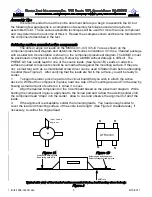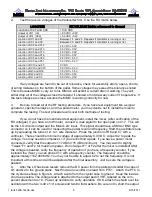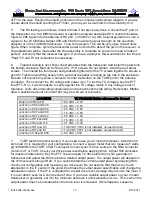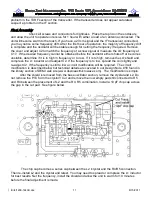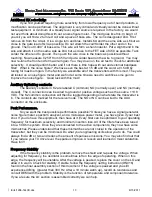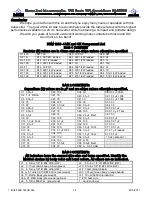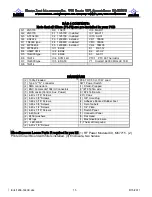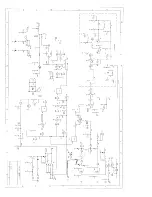
/Kits/1296-144CK.doc
2
8/15/2011
all components used are specified on the component list that accompanies the PCB when
purchased!
For a higher probability of success, and 100% support of Down East Microwave Inc., we
recommend at the minimum, using the 1296-144K. The K (kit version) includes the PCB and all
components required to produce a low transmit level 23 cm transverter. If higher output power is
required, you may simply order the hybrid power module that the circuit was designed for but
physical mounting may be difficult due to components located on both sides of the circuit board.
For this reason, if you wish a 3 Watt unit, we recommend using the complete kit version. The
1296-144CK (complete kit) includes the board kit and the hybrid power module along with all the
necessary hardware, connectors and enclosure. Also included in the CK is a special mounting
plate that allows the mounting of the assembled PCB and hybrid module into the enclosure
provided. The circuit board mounting plate is machined so that the helical filters, PCB, local
oscillator shield, the hybrid power module, and all external DC and RF connectors are mounted
together as a complete assembly before installing in to the enclosure. This plate is the key to the
maximum reliability of the transverter (heat transfer and spurious oscillations) and allows complete
alignment before final assembly into the enclosure.
Circuit Description
A local oscillator of 192.00 MHz is multiplied X 6, filtered, and amplified to the +17 dBm
level then is injected into a high level mixer. In receive, the 23 cm signal enters through either the
RX port or the common antenna port. It is amplified by a high level, tuned input PHEMT low noise
amplifier that has approximately 16-17 dB of gain with <1.0 dB noise figure. The input circuit is
designed to attenuate all signals out side of the desired 23 CM band. The amplified signal then
passes through a 3 pole helical filter that allows approximately 30 MHz. of amplified bandwidth.
This signal is then amplified by a high level MMIC before being filtered by the next 3 pole helical
filter that restricts the receivers operation to a narrow segment of the 23 CM amateur band. This
signal enters the high level mixer and exits the IF port passing through a VHF low pass filter and
optional IF gain stage with a variable attenuator. Then depending on the configuration, it will pass
through the IF switch or not before becoming available to the 28 MHz. receiver.
On transmit, it is a reverse process. The 2 meter transceiver applies a signal of up to 10
watts of drive and it is then attenuated and filtered before entering into the mixer. The 23 cm
transmit signal then exits the mixer and is filtered by the 3 pole helical before being passed
through the transmit gain stages. It is then amplified up to approxi15 dBm before it is
filtered again to narrow the pass band energy. At this point the signal can be used as is or be
amplified up to the 3 watt level before either exiting the TX port or the common antenna port.
Other LO input, RF and IF frequency schemes may be used with the 1296 transverter such
as our other 28 MHz IF versions or the 1268/9 transmit converters. Simply do the math. There
are a few limiting factors for different frequencies of operation. The IF will operate on any
frequency between 28 and 188 MHz. With the correct LO filters. The RF filters will cover the whole
23 cm band. The LO filters in this kit will not tune to a 28 MHz IF range. All filters included in the
kit may need to be re-tuned or replaced and the levels will need to be checked. Therefore, if
attempting a large frequency change or using an odd IF frequency, is not recommended unless
you have a known signal source and a spectrum analyzer to determine your desired outcome of
the transverter.
For a more detailed circuit description about any component or circuit in particular, or if you
have questions about a desired scheme, we recommend you contact Down East Microwave
before proceeding with a modification to the kit.
Summary of Contents for 1296-144 CK
Page 16: ......



